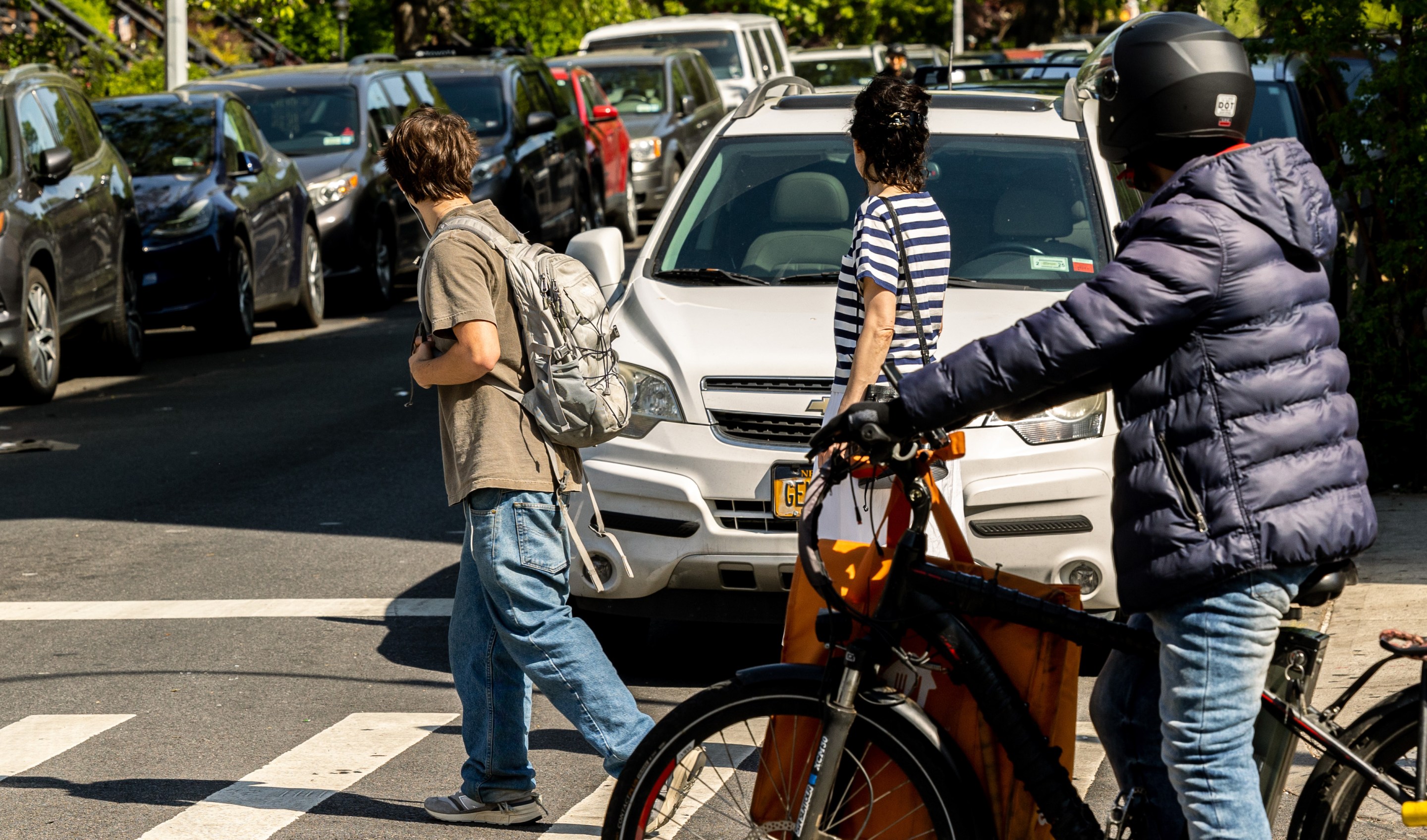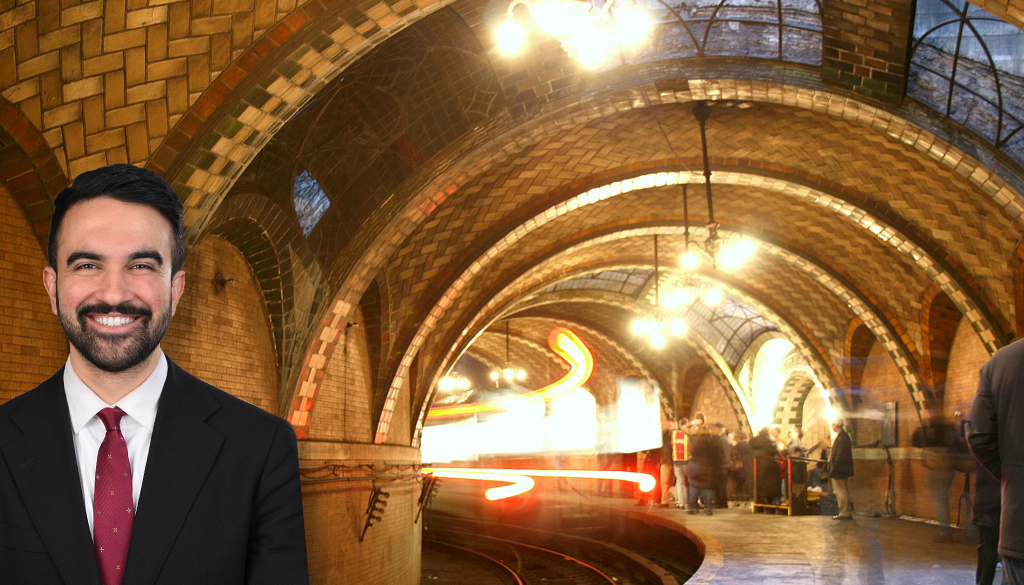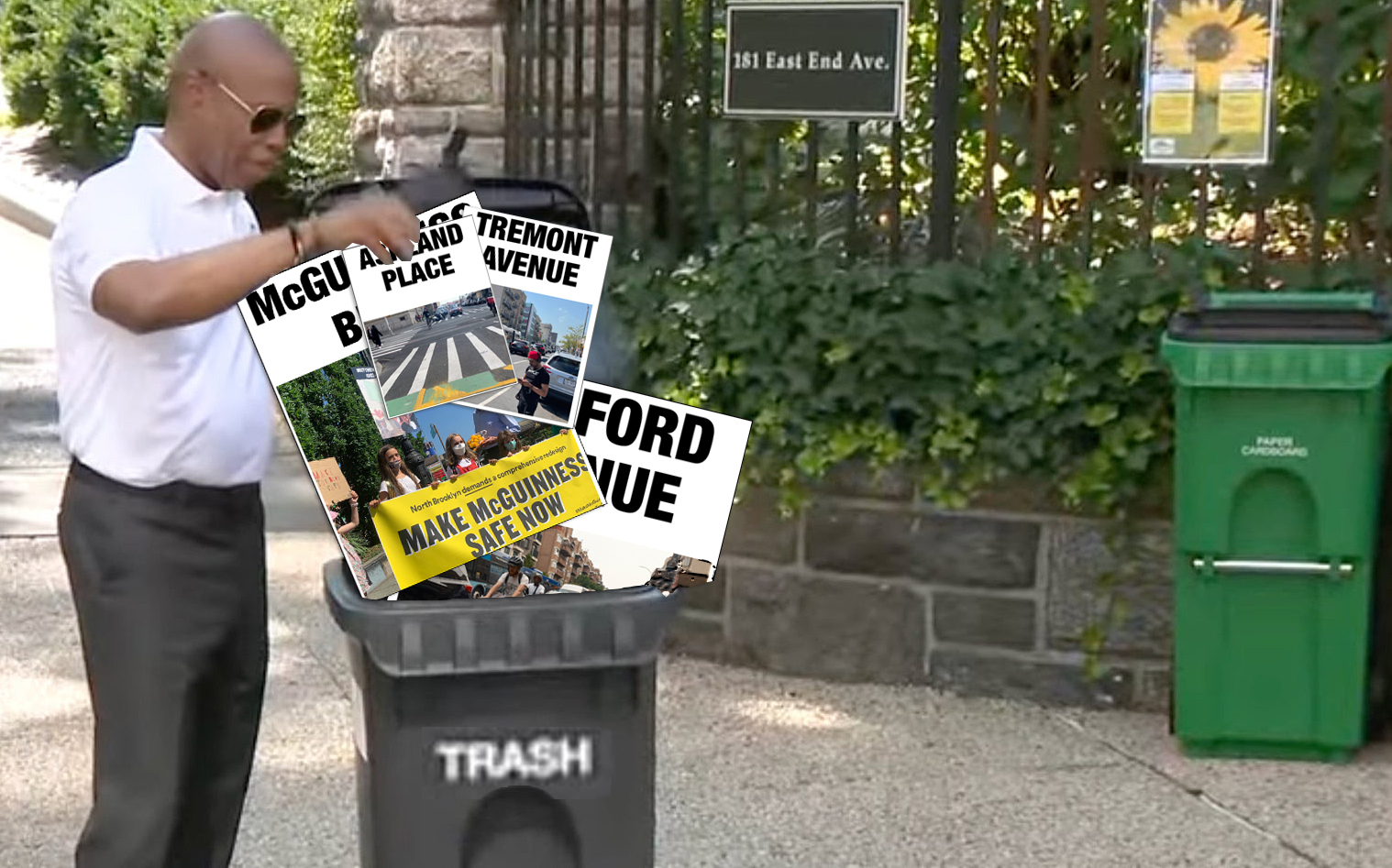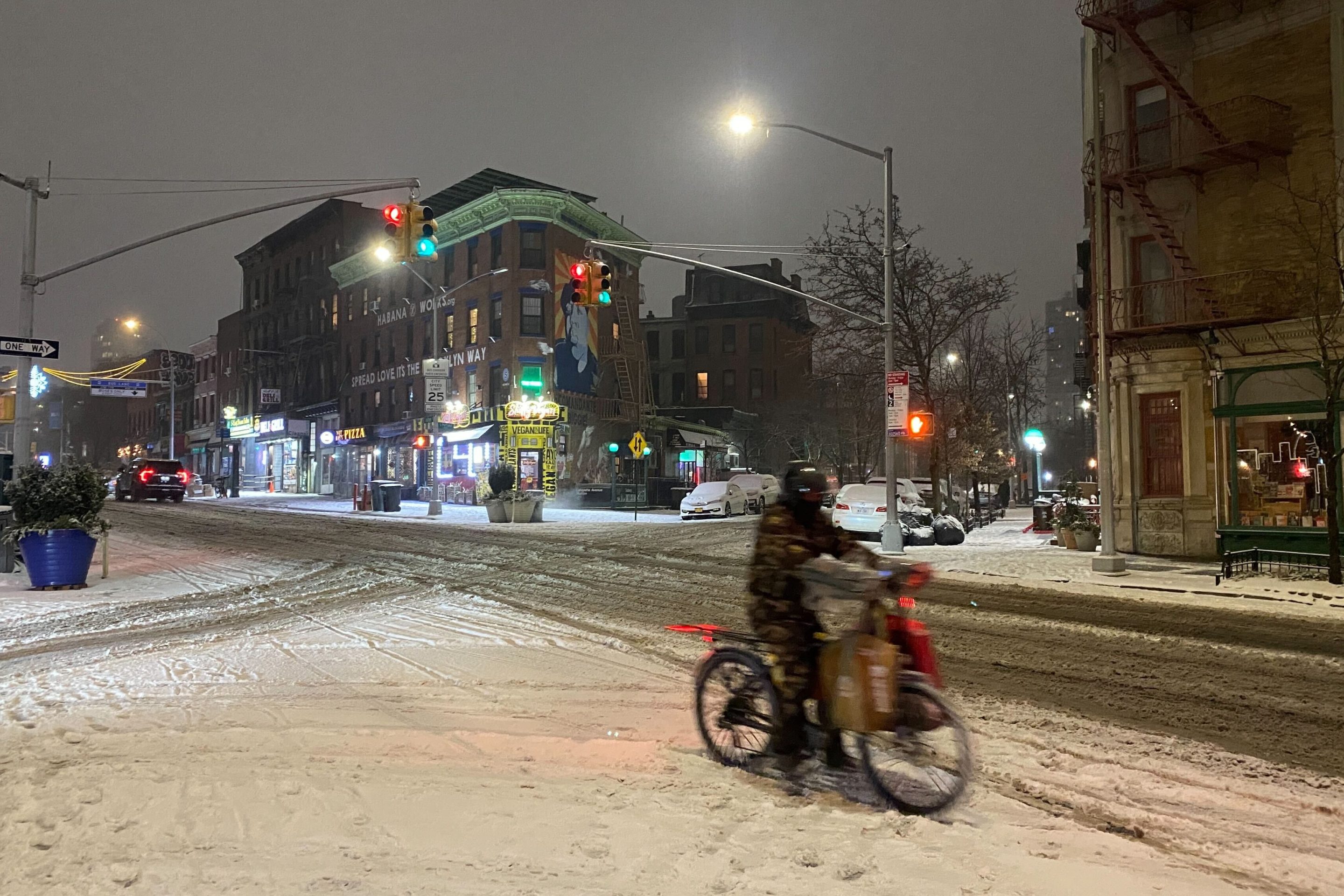A push to ban parking at intersections and improve visibility, also known as daylighting, will need more City Council members to sign on to a bill to overcome a likely veto by Mayor Adams, according to lawmakers and advocates.
Activists launched a lobbying push on Monday with lawmakers who have yet to sign on to the proposed law, as around half of the 51-member body have co-signed the bill by Queens Council Member Julie Won.
"The hope is to get to a veto-proof majority," Won told Streetsblog after a rally with advocates. "It’s important for people to understand how many lives are being lost, how many people are being injured – permanently injured where their lives are ruined even if they survive."
The bill, Intro 1138, would prohibit parking within 20 feet of an intersection, and require the Department of Transportation to install barriers to keep out motor vehicles at 1,000 crossings a year.
The legislation until recently had a majority with 26 members signed on, but lost a vote after Lower East Side Council Member Carlina Rivera resigned from office last month. Her likely successor, Democratic nominee and Assembly Member Harvey Epstein, could "pre-commit" to supporting the bill even before taking office if he wins the general election in November, Won said.
Epstein plans to co-sponsor the bill, he told Streetsblog in an email.
However, Council insiders said the bill will need at least eight more members to reach a veto-proof majority of 34 members, given that Mayor Adams and his First Deputy Mayor Randy Mastro have increasingly tried to block bills, such as the proposal to expand workplace protections and institute a minimum wage for grocery delivery workers.
"My understanding is that Randy Mastro is trying to veto every bill that he can, and so my expectation across the board is that any potentially controversial piece of legislation requires a veto-proof majority," Brooklyn Council Member Lincoln Restler told Streetsblog. "The administration’s going to pull out all the stops to try to flip council members, and so it’s probably a veto-proof majority plus a few extra."
The push originated after the killing of 7-year-old Dolma Naadhun in Astoria in 2023. Later that year, another 7-year-old, Kamari Hughes, was killed on his way to school by a turning NYPD tow truck at an intersection with poor visibility in Fort Greene. The child deaths galvanized a grass-roots push by 23 of the usually car-friendly community boards to endorse universal daylighting.
As school returned in the city last week, young New Yorkers have once again been facing some of the most dangerous streets on their way to class, and at their shorter height, they are even less visible to drivers, noted one advocate, who brought a tape measure to show the hood height of a modern pickup truck.
"Picture looking over that to see oncoming traffic. Now, picture that you have a stroller three feet out in front of you. Now get down on your knees. This is how my four-year-old sees the world. What are we telling him about what our city is for?" said Zeke Dunn, a volunteer for Kids Over Cars.

The Adams administration has fought back hard against the bill, with DOT officials pouring untold hours of research into a flawed study calling daylighting's effectiveness into question, and projecting astronomical costs and thousands more injuries a year if the policy became law.
Car-first politicians and media outlets soon seized on the DOT's ready-made anti-daylighting talking points to poo-poo the bill, citing sensationalist multi-billion-dollar pricetags and the "loss" off hundreds of thousands of spaces for cars, which supporters have denounced as nothing more than a "scare tactic."
Daylighting has been standard practice going back to the dawn of the automobile age in the 1920s. It is already the law across more than 40 states – including in New York, but the state law that bars parking at corners also allowed the Big Apple to exempt itself for reasons that elude us to this day.
Over in Hoboken, New Jersey, officials have aggressively rolled out daylighting and have not logged a single traffic death in eight years. Pedestrians struck by drivers dropped by 35 percent, cyclists by 11 percent, and crashes dropped by 27 percent overall in the Mile Square City.
A spokesperson for Speaker Adams said the Council was still gathering feedback on the bill.
"Introduction 1138 continues to go through the Council's legislative process, which is deliberative and allows for thorough public engagement and input," said Julia Agos in a statement. "We continue to accept and appreciate feedback on this legislation from all stakeholders in our city."
The Adams administration, meanwhile, reiterated DOT's flawed study to dismiss the bill — despite the agency having itself admitted that it couldn't conclusively blame daylighting for more deaths or injuries.
"Research has shown that when applied universally or in the wrong contexts, daylighting can actually lead to an increase in pedestrian injuries, making our street corners less safe," City Hall spokesman William Fowler said in a statement. "For this reason, we oppose this legislation and strongly urge the City Council to review the body of research on this subject before proceeding to a vote."






